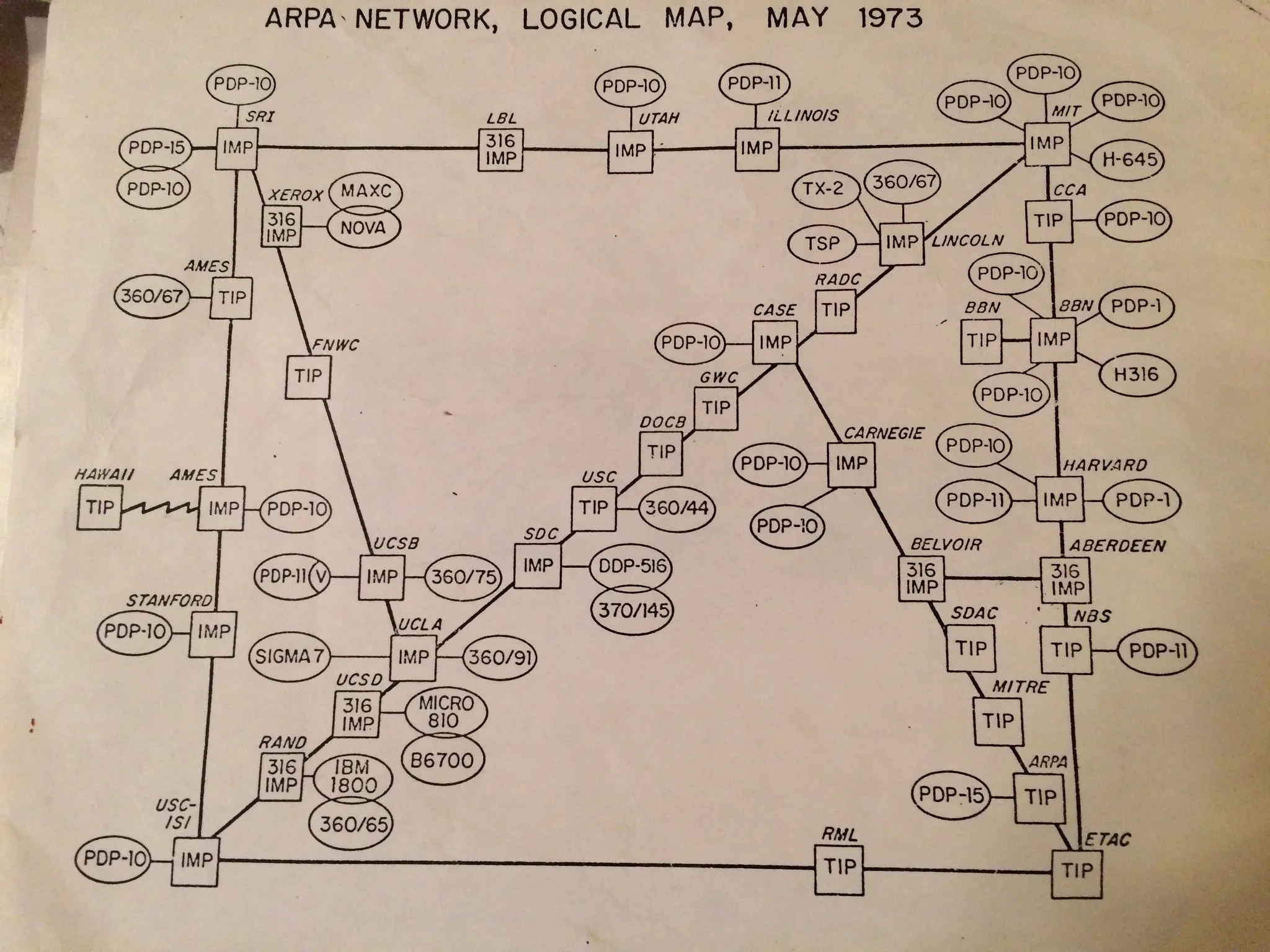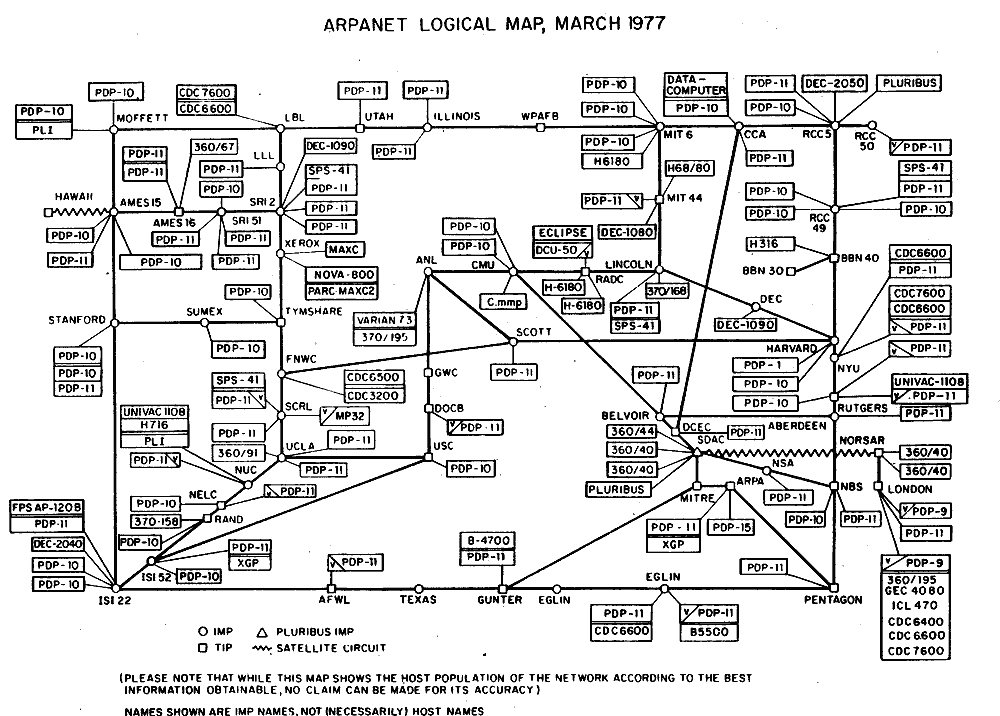A map of the entire internet in 1973 has surfaced. This early iteration, also known as ARPANET, shows just a handful of computers and servers that were connected to one another – most of which were either governmental or university hosts.
The map surfaced when David Newbury of Workergnome studios found the map when going through old papers that his father, Peter Newbury, had kept from his days as the business manager at the School of Computer Science at Carnegie Mellon University in Pittsburgh, Pennsylvania.
Going through old papers my dad gave me, I found his map of the internet as of May 1973.
— David Newbury (@workergnome) December 10, 2016
The entire internet. pic.twitter.com/0krvYoRGav
The map of the internet
The map shows the culmination of all the connected machines making up the entire internet at the time. The first connection took place at UCLA (University of California, Los Angeles) between the SIGMA7 and the UCLA IMP. The IMP is an Interface Message Processor, acting as a middleman between two separate participating computers on the network–effectively, it’s a router. This first connection was made in September 1969. This initial connection can be seen in the bottom left quarter of the map.
A further connection took place a month later, as SRI (Stanford Research Institute) connected their computer (PDP-10) to an IMP. It was then that UCLA and SRI connected their IMPs. This was the founding connection of the internet that you’re using right now. UCLA and SRI connected, and UCLA logged into the SRI computer remotely on 29th October 1969. This later became a permanent connection.
The 1973 map of the internet, showing every connection. All credit goes to Peter Newbury and his son David Newbury.
Shortly thereafter, UCSB (University of California, Santa Barbara) received an IMP and became connected to the network. The University of Utah was connected via an IMP in December 1969, establishing a four node network.
The rest, as they say, is history. However, this snapshot shows the internet just a few years into its life. Many more connections exist, but it is far from the sprawling and all-encompassing mass that exists today.
It is all relatively constrained too, with this map covering the United States. A satellite link can be seen reaching Hawaii (the zigzagging line). It would be a matter of months before a connection is made with Norway via a satellite link (known as the NORSAR connection) and an IMP connects from London in the UK.
A few years later–here's the internet in 1977.
Whilst ARPANET and its army of IMPs was slowly phased out, finally disappearing in 1990, it was the foundational stone for the internet as we know it today, making this a fascinating little slice of internet history.



